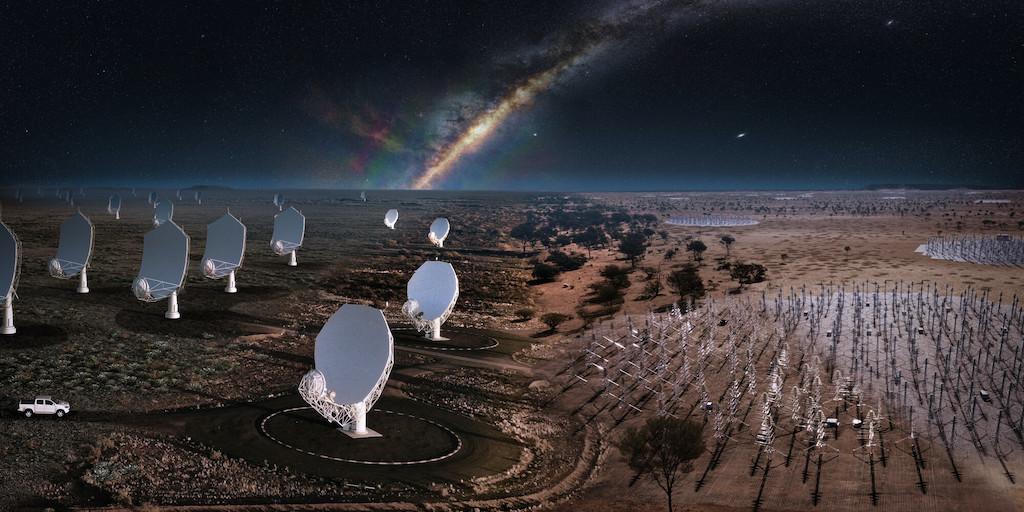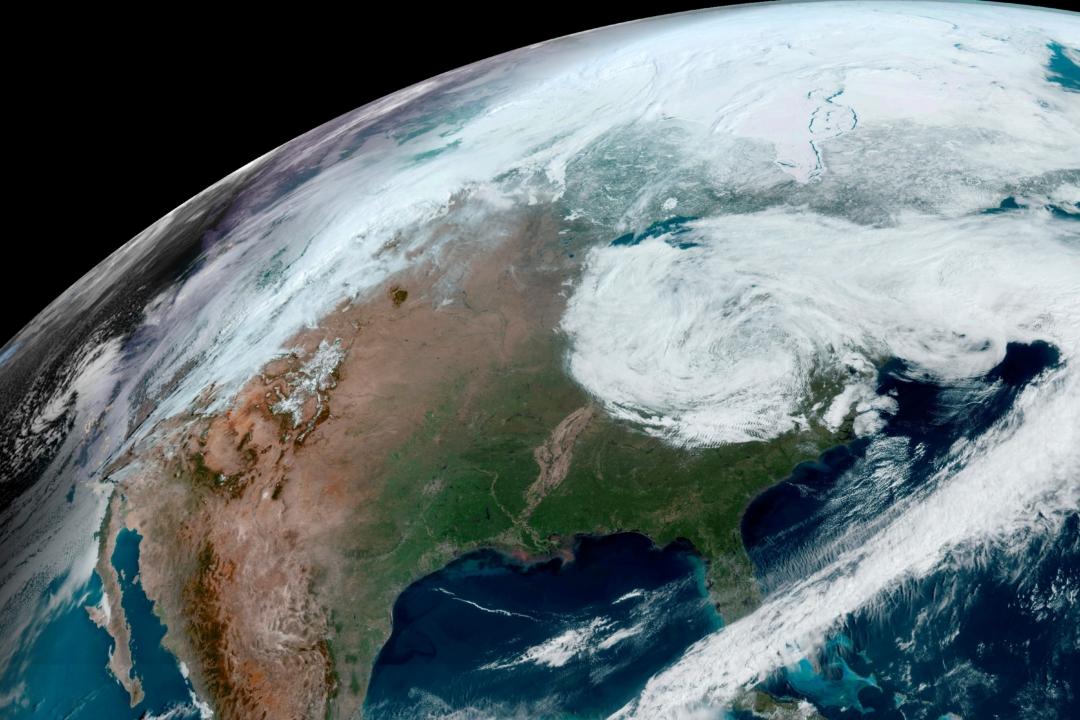There are a lot of unanswered questions in the world, but thanks to Australia’s next-generation radio telescope, the Australian Square Kilometer Array Pathfinder (ASKAP) and a recently observed “fast radio burst” (FRB), astronomers are one step closer to answering some of cosmology’s fundamental questions.
“If we count up the amount of normal matter in the universe—the atoms that we are all made of—we find that more than half of what should be there today is missing,” Swinburne University of Technology’s Associate Professor Ryan Shannon said in a press release. “We think that the missing matter is hiding in the space between galaxies, but it may just be so hot and diffuse that it’s impossible to see using normal techniques.
“Fast radio bursts sense this ionized material. Even in space that is nearly perfectly empty, they can ’see' all the electrons, and that allows us to measure how much stuff is between the galaxies.”
Mr. Shannon and Stuart Ryder, an astronomer at Australia’s Macquarie University, co-led a study that examined an FRB first observed by ASKAP in June 2022.
They discovered that the FRB originated over 8 billion years ago and, in milliseconds, unleashed energy equal to what the sun produces over three decades. That made the FRB, known as FRB 20220610A, the most powerful ever observed.
“While we still don’t know what causes these massive bursts of energy, the paper confirms that fast radio bursts are common events in the cosmos and that we will be able to use them to detect matter between galaxies and better understand the structure of the universe,” Mr. Shannon said.
Fast Radio Bursts
First discovered in 2007, FRBs are bright, brief bursts of electromagnetic radiation, invisible to the naked eye but detectable by radio telescopes.And while their cause is unknown, some scientists, like Marcin Gawroński from the Institute of Astronomy at the Faculty of Physics, Astronomy, and Informatics Nicolaus Copernicus University, believe that magnetars could cause them.
“Magnetars are neutron stars with extremely strong magnetic fields; they are formed after supernova explosions,” Mr. Gawronski told Phys.org.
Missing Matter
In the 1990s, the Hubble Space Telescope allowed scientists to determine that the universe is expanding exponentially and at a faster rate than previously thought. They also hypothesized that this acceleration is the result of dark energy, a force that theoretically accounts for 68 percent of the universe and drives objects apart, but beyond that, it is a complete unknown, according to NASA.The remaining makeup of the universe includes dark matter and “normal” matter.
Scientists believe dark matter—which is different from dark energy—makes up 27 percent of the universe. But like dark energy, dark matter is a relative unknown as it can’t be measured directly. Instead, it’s defined by what it’s not—it’s not normal matter or matter made up of particles called baryons, antimatter, or black holes, NASA reports. Dark matter is only known to exist because of its gravitational effect on things like galaxies and stars.
Normal matter (visible matter, i.e., stars, galaxies, etc.) theoretically accounts for the remaining five percent. However, half of the normal matter that should be observable by astronomers is missing.
According to Mr. Ryder, the late astronomer Jean-Pierre ‘J-P’ Macquart, at the International Centre for Radio Astronomy Research at Western Australia’s Curtin University, was the first to demonstrate that FRBs could be used to “find” missing matter.

“J-P showed that the further away a fast radio burst is, the more diffuse gas it reveals between the galaxies,” he said.
To study the June 2022 FSB, Mr. Ryder said he and his colleagues used ASKAP’s array of dishes to determine precisely where the burst originated. Then, they used the European Southern Observatory’s Very Large Telescope in Chile to locate the source galaxy. From there, they determined that the FSB’s origination was “older and further away than any other FRB source found to date, and likely within a small group of merging galaxies.”
In their paper, Mr. Ryder and Mr. Shannon additionally reported, “Free electrons along the path between the FRB source and the Earth impart a frequency-dependent time delay (dispersion) on the radio signal. This dispersion can be used to measure the column density of free electrons (quantified by the dispersion measure) between the FRB source and observer.
“FRBs localized to host galaxies at different redshifts exhibit a positive correlation between extragalactic [dispersion measure] and host redshift, known as the Macquart relation. This relation has been used to measure the cosmic baryon fraction and the expansion rate of the Universe. This relation has been measured using identified FRB host galaxies at relatively low redshifts.”
Understanding the Cosmos
In addition to passing through particles and hot gasses, while the FRB wave is traveling, the universe is expanding. That expansion “stretches” the wavelength of the light so that the light “shifts” towards the red part of the spectrum (it becomes redder). This effect is called “redshift,” and it allows astronomers to estimate the velocity at which a galaxy is moving away from Earth.In the 1920s, Edwin Hubble discovered that the universe was expanding, and using that, astronomers could roughly estimate the universe’s age. Still, before 1999, astronomers thought that the universe was between seven and 20 billion years old, NASA reports.
Today, thanks to the Hubble Space Telescope, astronomers believe the universe is around 13.8 billion years old. However, that age estimate is only as reliable as the accuracy of the distance measured. As of 2019, the age of the universe still had an uncertainty of around two percent, Hubblesite reports. That’s where FRBs come into play.

To date, there have been 50 observed FRBs. However, there are thousands more occurring. Mr. Ryder and Mr. Shannon theorize that by using the currently under-construction SKA telescopes in western Australia and South Africa, astronomers will be able to locate older and more distant FRBs and more accurately calculate the age of the universe. Once completed, the SKA telescopes will be the most advanced radio telescopes in the world.
“More distant and extreme fast radio bursts promise to reveal further secrets about the universe, so astronomers are on the hunt,” said Mr. Shannon. “Our discovery [of FRB 20220610A] also demonstrates the potential for fast radio bursts to study the composition of the distant universe.
“As we look back in time, we see the structure of galaxies changes a great deal. Bursts in distant galaxies may allow us to study the detailed structure of their hosts.”







